How To Dress Your Baby This Winter?
How To Dress Your Baby This Winter?
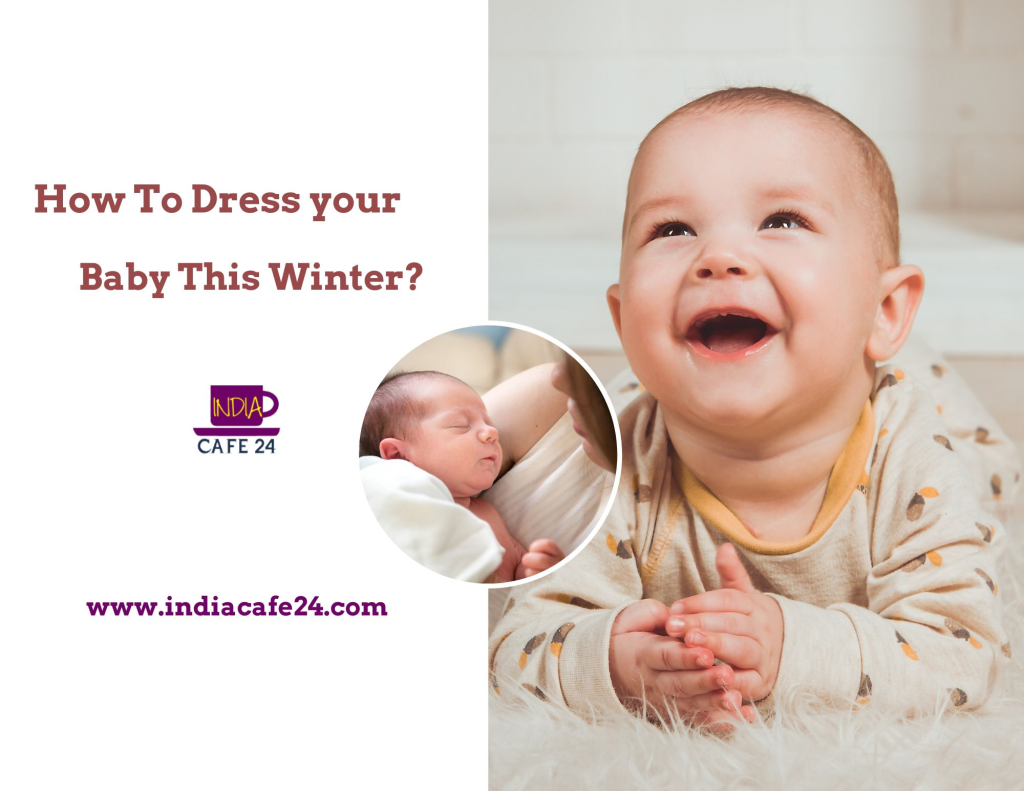
Winters are knocking at the door, and we must be gearing up to face the chill. However, things become more brainstorming if you have a baby. Parents are more concerned about their little ones than themselves regarding protection in winter. Moreover, keeping in mind that the baby’s skin is ultra-sensitive, it is essential to choose a suitable fabric.
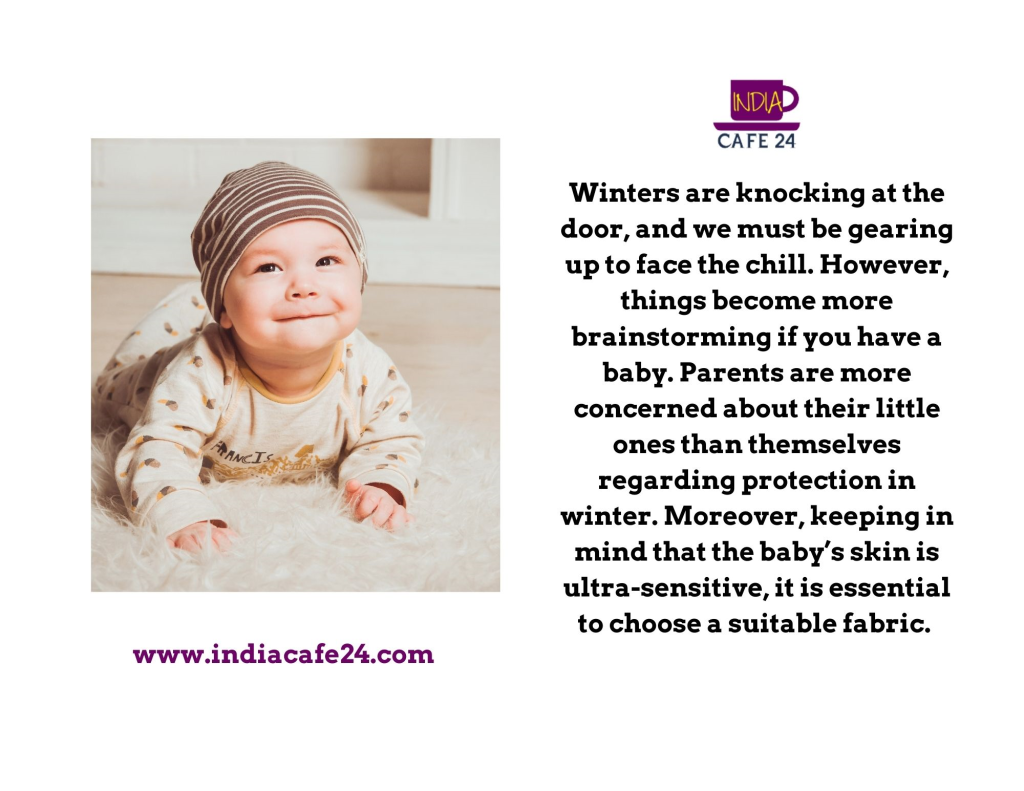
My friend’s son recently turned two, and this winter will be the third in his lifetime. It took her three years to decide how to dress him at lower temperatures. Things were not so smooth to decide when he was a newborn or a one-year-old. I, being a new mom of a 6-month-old baby, was super tensed to decide which wool will be best for my baby’s skin.
My friend guided me from her experience. Thus, this post intends to clarify the doubts of all first-time parents wondering how to keep their babies comfortable and safe this season.
What Types of Warm Fabrics Suitable For Babies?
In previous times, there were limited options for winterwear fabrics, mostly restricted to wool. However, pure wool may sometimes be heavy for the little one. Also, many would deteriorate in washing machines.
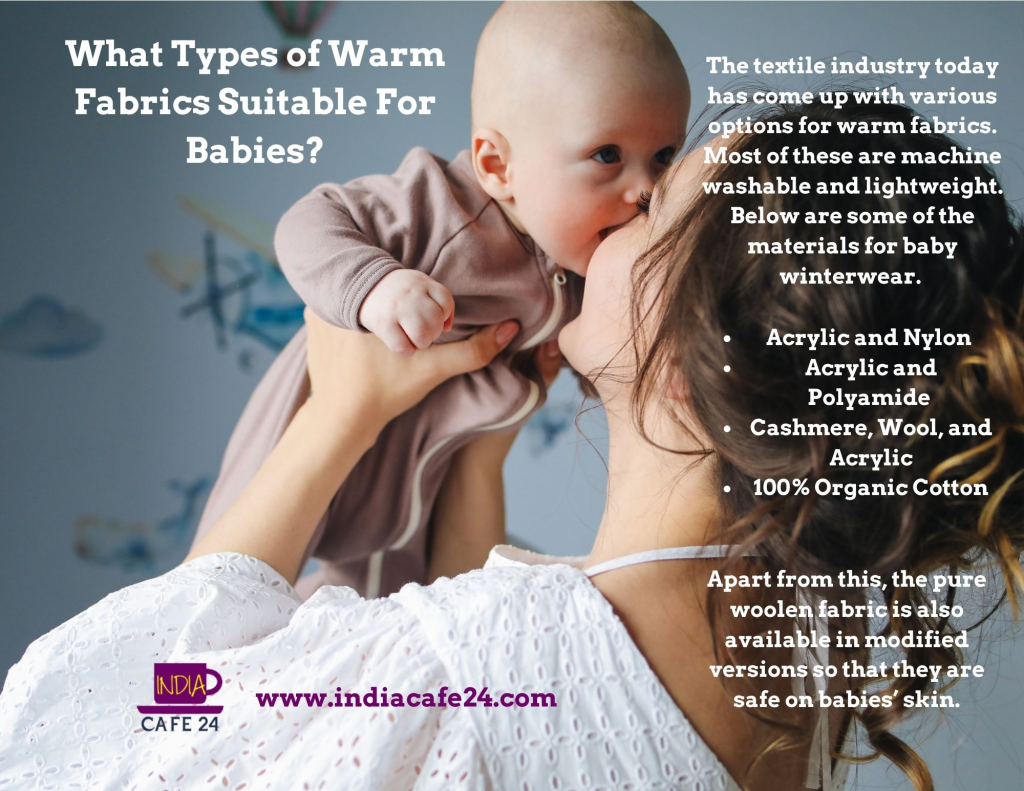
The textile industry today has come up with various options for warm fabrics. Most of these are machine washable and lightweight. Below are some of the materials for baby winterwear.
- Acrylic and Nylon
- Acrylic and Polyamide
- Cashmere, Wool, and Acrylic
- 100% Organic Cotton
Apart from this, the pure woolen fabric is also available in modified versions so that they are safe on babies’ skin.
What to Keep in Mind While Selecting Baby Winterwear?
Garments designed for babies are significantly softer and lighter. Fabric not meant for babies may cause rashes or irritation. Thus, purchasing garments from a shop or online portal that deals exclusively with kids’ dresses is better.
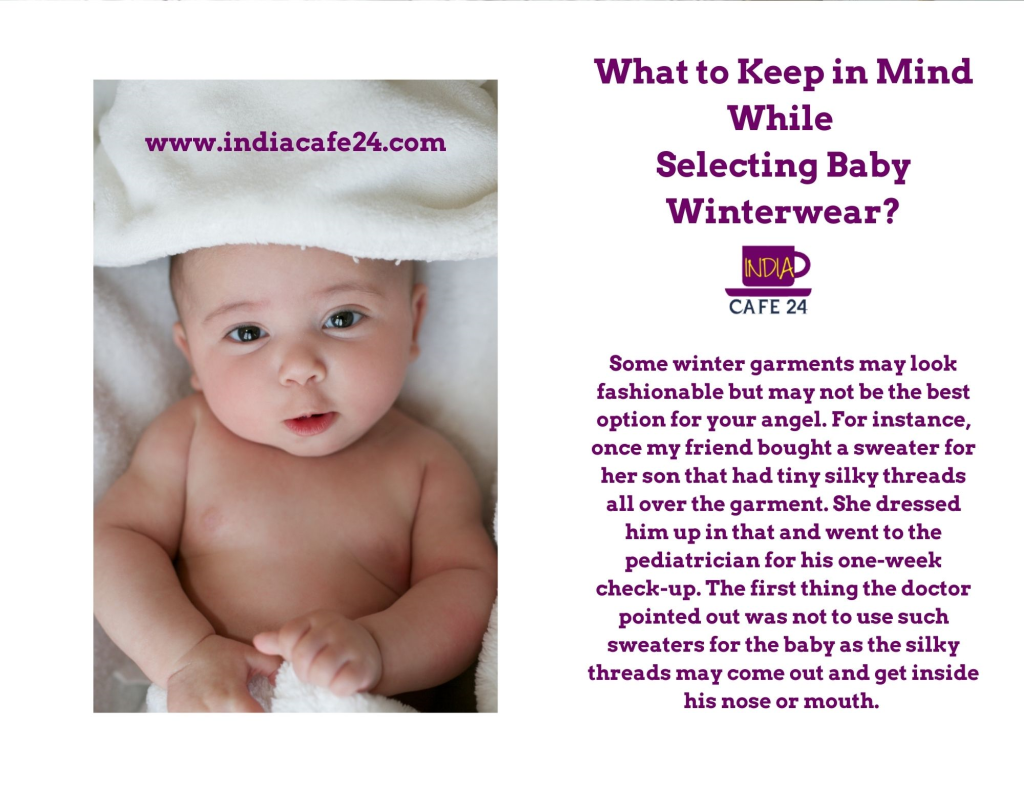
Some winter garments may look fashionable but may not be the best option for your angel. For instance, once my friend bought a sweater for her son that had tiny silky threads all over the garment. She dressed him up in that and went to the pediatrician for his one-week check-up. The first thing the doctor pointed out was not to use such sweaters for the baby as the silky threads may come out and get inside his nose or mouth.
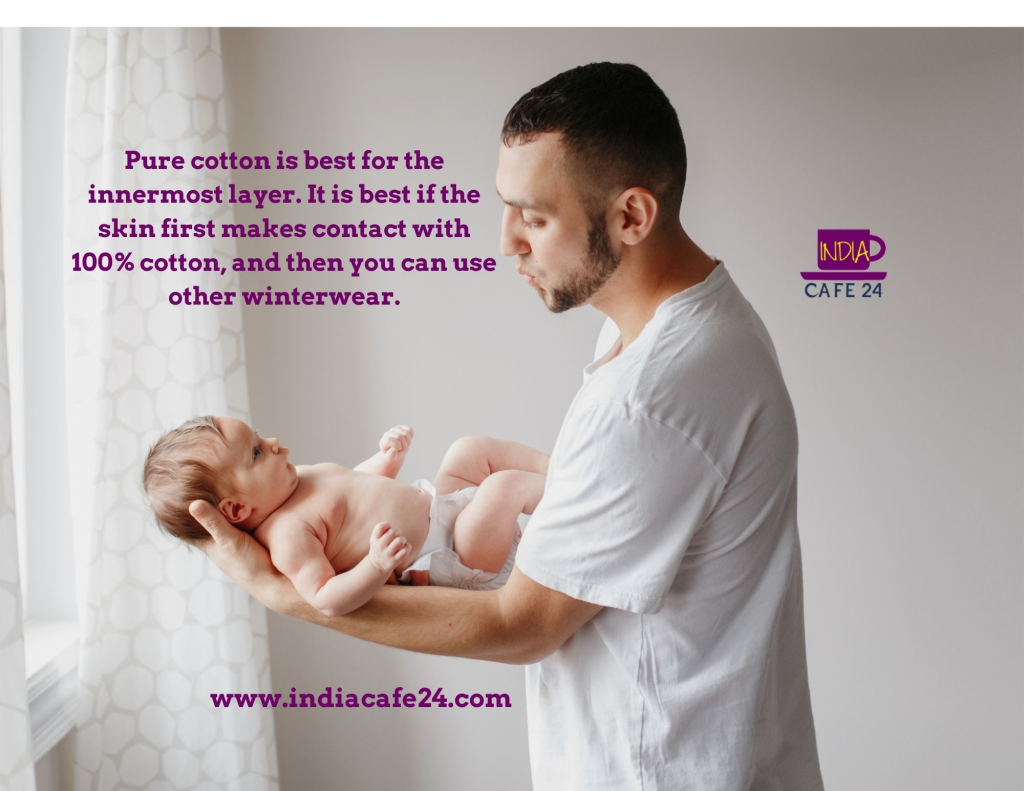
Pure cotton is best for the innermost layer. It is best if the skin first makes contact with 100% cotton, and then you can use other winterwear.
You may prefer clothes that are machine washable. You can check the temperature settings, as not all machines have the feature to alter the temperature. This point is vital as newborns and babies pee more in winter. Thus, if you are not using nappies for your kid, there will be many clothes to wash, which may become tedious without using the machine.
What to Do Before Making your Baby Wear the Garment?
You must wash the clothes with antiseptic liquid and baby detergent and dry them in the sunlight completely before putting them on your child.
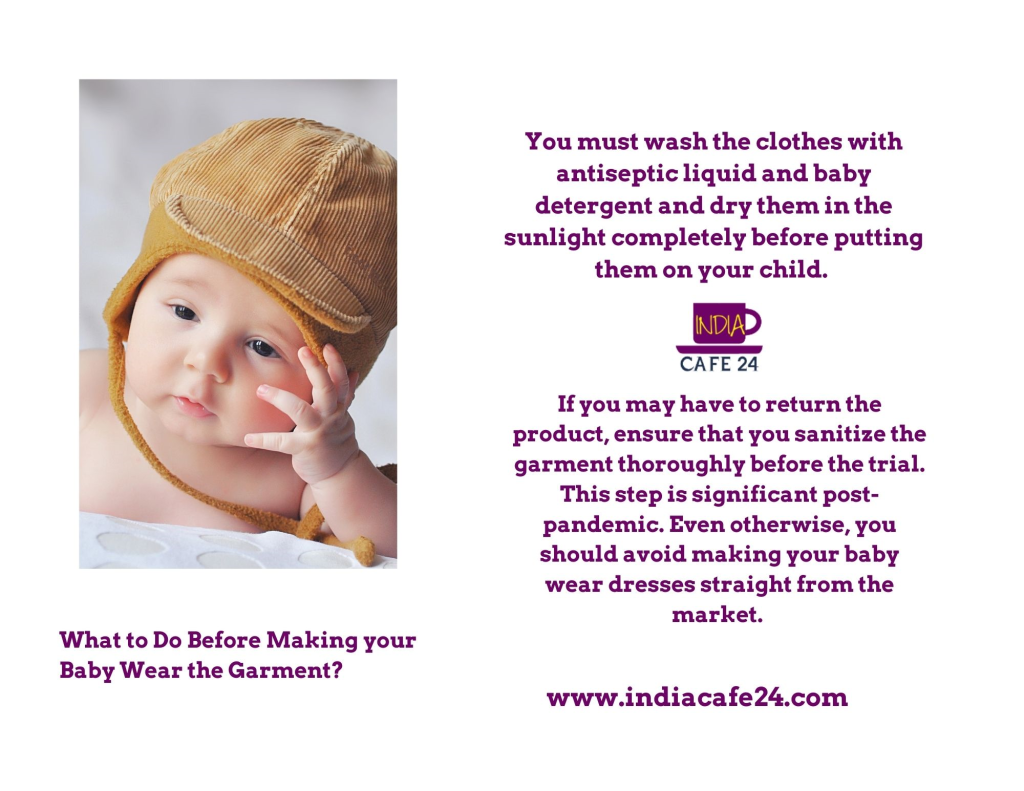
If you may have to return the product, ensure that you sanitize the garment thoroughly before the trial. This step is significant post-pandemic. Even otherwise, you should avoid making your baby wear dresses straight from the market.
Ensure the dress is devoid of any tags, clips, pins, etc. You can detach the labels and keep them aside for return if required.
How to Dress Babies in Winters?
Dressing up newborns and infants follows two thumb rules, and if you get these right, you will not have any hassles.
The first point is that you need to dress your baby in layers. Layering clothes allows you to take off a few garments if you find your baby sweating.
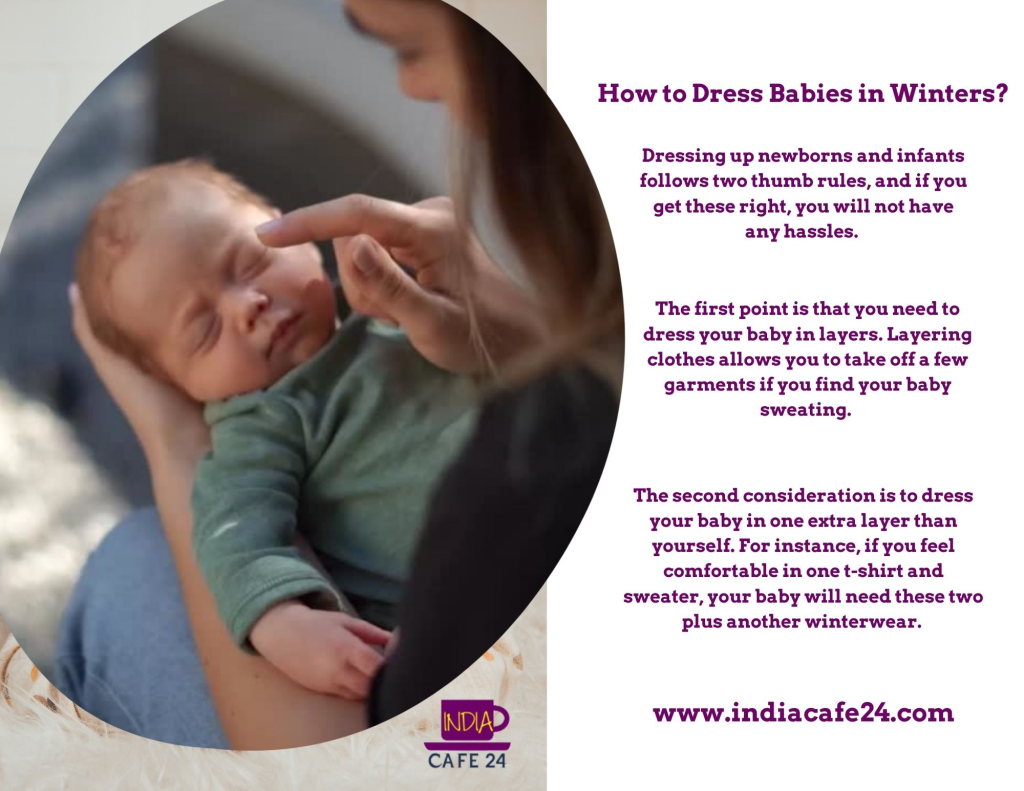
The second consideration is to dress your baby in one extra layer than yourself. For instance, if you feel comfortable in one t-shirt and sweater, your baby will need these two plus another winterwear.
These rules are applicable for kids from 0 months until, say, two to three years. Kids in this age group require more warmth than adults. After a certain age, their body functions like adults, so they can wear as many layers as their parents require.
Also, ensure that you check your little one frequently for sweat droplets. If you find sweat glistening on their cute scalp or forehead, where they sweat more, it is time to take a layer off.
The Final Takeaway
A journey with a baby is the best way to learn human patterns. There are so many things to learn while the baby is growing up. When you are researching your babies’ winterwear, you get to expand your knowledge and experience.

Therefore, do your research and be prepared to safeguard your child in the best possible way this season. You will aim to strike the right balance between comfort and protection. Happy Winters!
This blog post is part of the blog challenge ‘Blogaberry Dazzle’ hosted by Cindy D’Silva and Noor Anand Chawla.

Keep ourselves and our babies warm during winters is important. Especially the chest, feet and head.
Living in humid Singapore all year round, I’m glad I never had to worry much about this when my daughter’s when they were younger. With only a few vacations on countries during their cold season, I must say it’s really something added to your long list of things to consider as a parent especially when you have a young one who can’t say yet whether their cold or too much stuffed that they can’t breathe no more.
I find dressing up kids in winters very tedious. So many layers needed.This post is really helpful.
What a thoughtful post Samata… I’m sure a whole lot of new mommies will benefit by reading it. My Kids are over this age but while reading your post I went back in time briefly and re-lived those moments when I used to feel their soft bodies wrapped in woolies against my cheek… it used to feel heavenly😊
I loved the line… ‘A journey with a baby is the best way to learn human patterns.’
Mom of twin babies and I am always worried to cover them fully in winter. Your post is really helpful. Keeping feet and chest cover is the main part to keep them warm.
Babies are very delicate, we need to take care of them at every step. Winter is a crucial season so they need special care, your post is really good.
This is indeed a very helpful post for new parents. Here in the gulf weather in winters are cozy. So I never had to worry much about this when my children were small. ,
I used to love dressing up my kids in winters when they were young. You have shared some really useful tips. Sometimes a garment looks good but it might not be ideal for the baby. We need to be very careful.
This is a very helpful post for new mom’s. The material to be used for the baby’s body is so important because the baby has to be comfortable and happy too.
Moms always know best. I wasn’t aware of the extra layer rule of thumb. I am sure your post would be useful to all the new moms out there.
Wen its too cold i prefer to go for warm wears but for normal days wen its ac to Deal with I manage with extra layers.
Handling babies especially dealing with their sensitive skin is a thing that demands utmost care and caution. Winter care is a task of doublecheck.
It is important to keep the little ones warm. Swaddle as much as possible. Socks, Gloves, Beanies & Sweaters are a must Try merino wool. It is really soft and keeps one warm….only thing is it stretches a lot. So you have to be careful when washing & drying it so that it retains shape.
Winter is upon us and these tips will surely help first-time moms. Your post is very descriptive and helpful. Thanks for sharing such good tips.
I prefer cotton if need be other options as its safe for babies and kids. Your pointers are very helpful especially with the mercury dropping down.
Living in Chiberia – yes Chicago can get as cold as Siberia, I know what it means to dress up your little ones for the cold. Breathable and comfortable fabric is the right way to start, especially if your kiddo has sensitive skin. You cannot go without layering and following the basic rules. Very infomative post!
Oh I still remember the first winter I had with my daughter and how cautious I had been in picking up her clothes. Thankfully we do not go through harsh winters in Mumbai though.
Educative and informative! You’ve not just said what to do, but also why that option will work
This post is going to help all newbie mommies. I make sure that I select the right fabric as kid’s skin is super sensitive and I never make them wear without washing. Great tips.
Thanks for these tips!